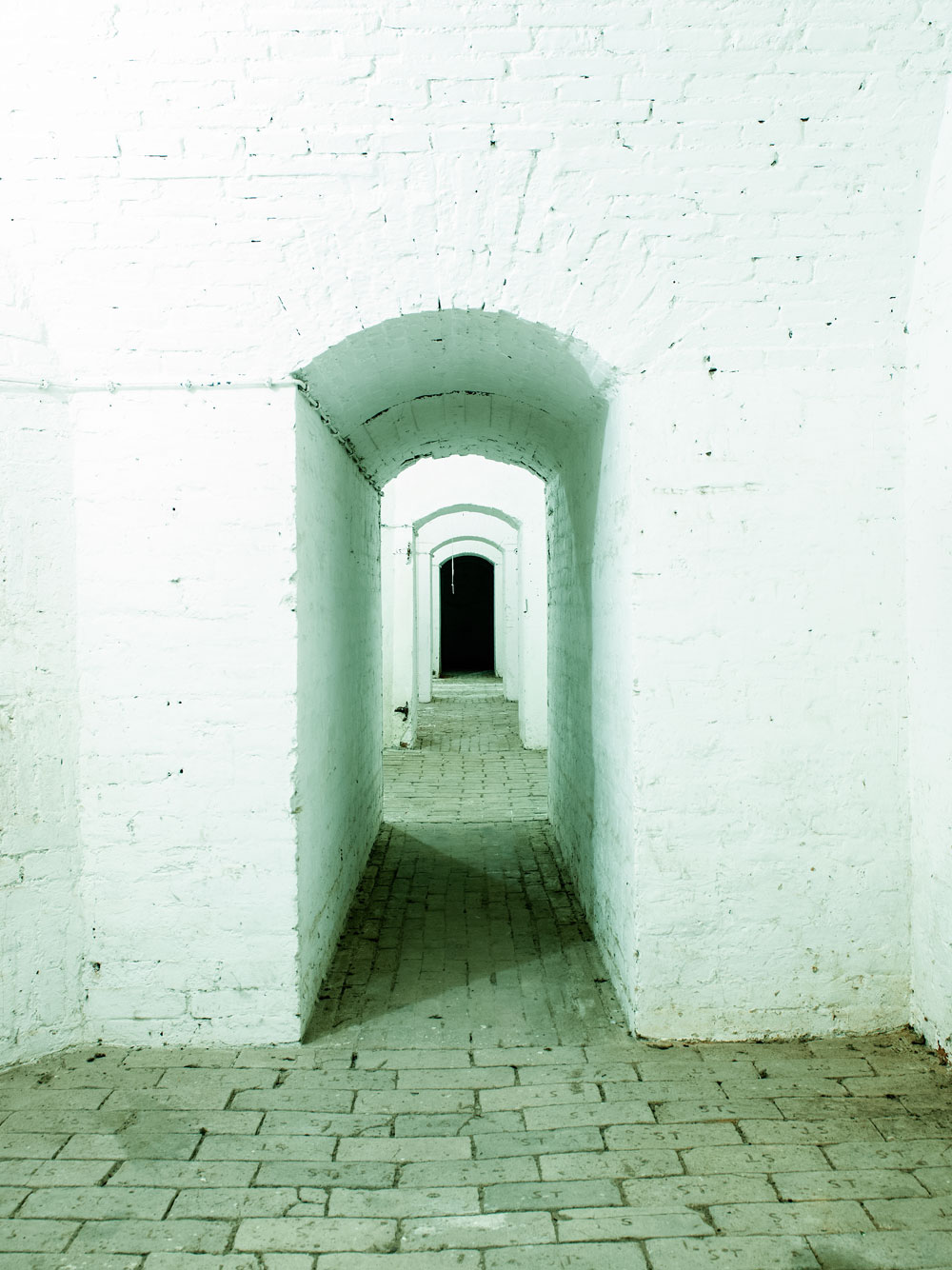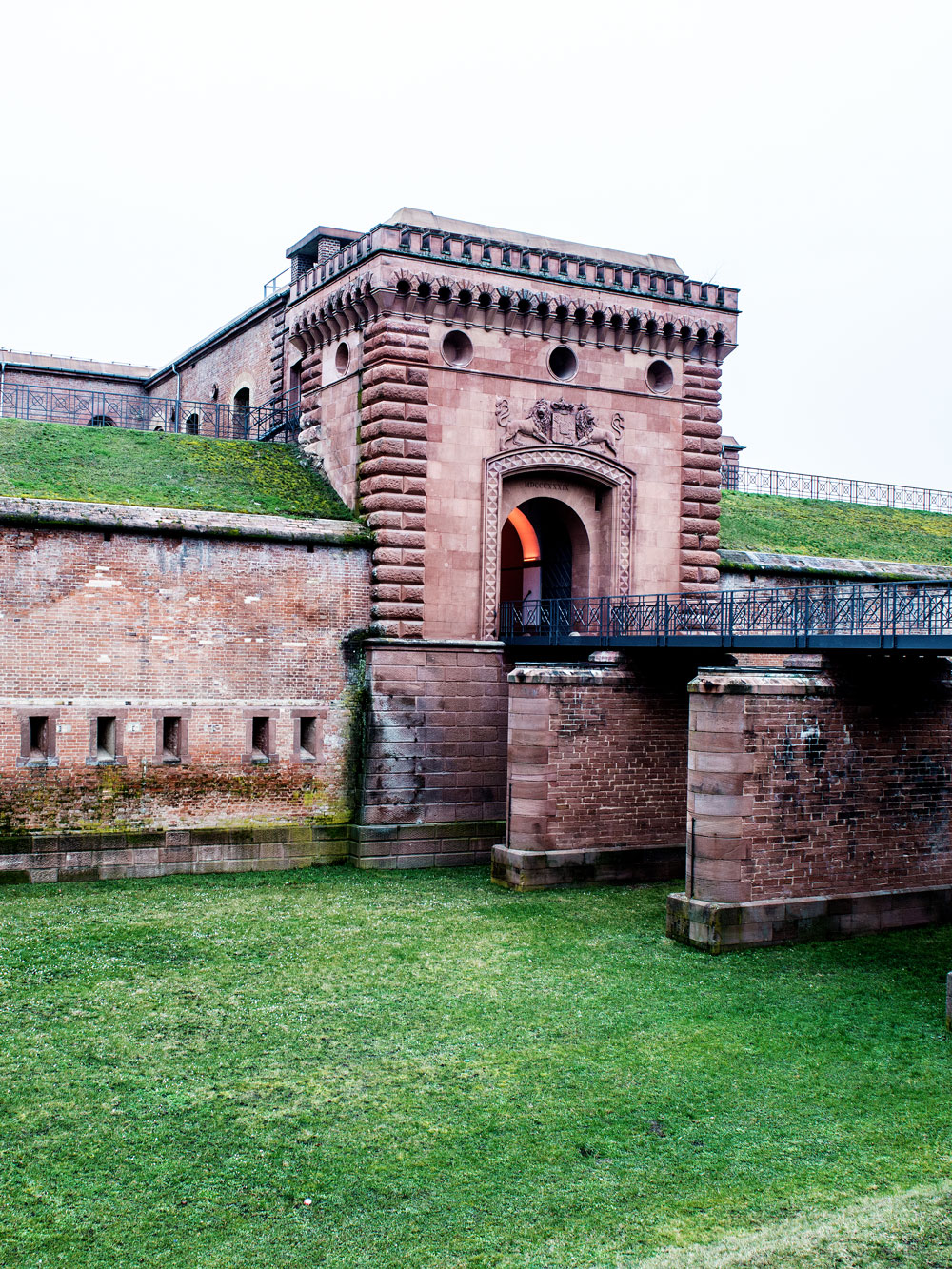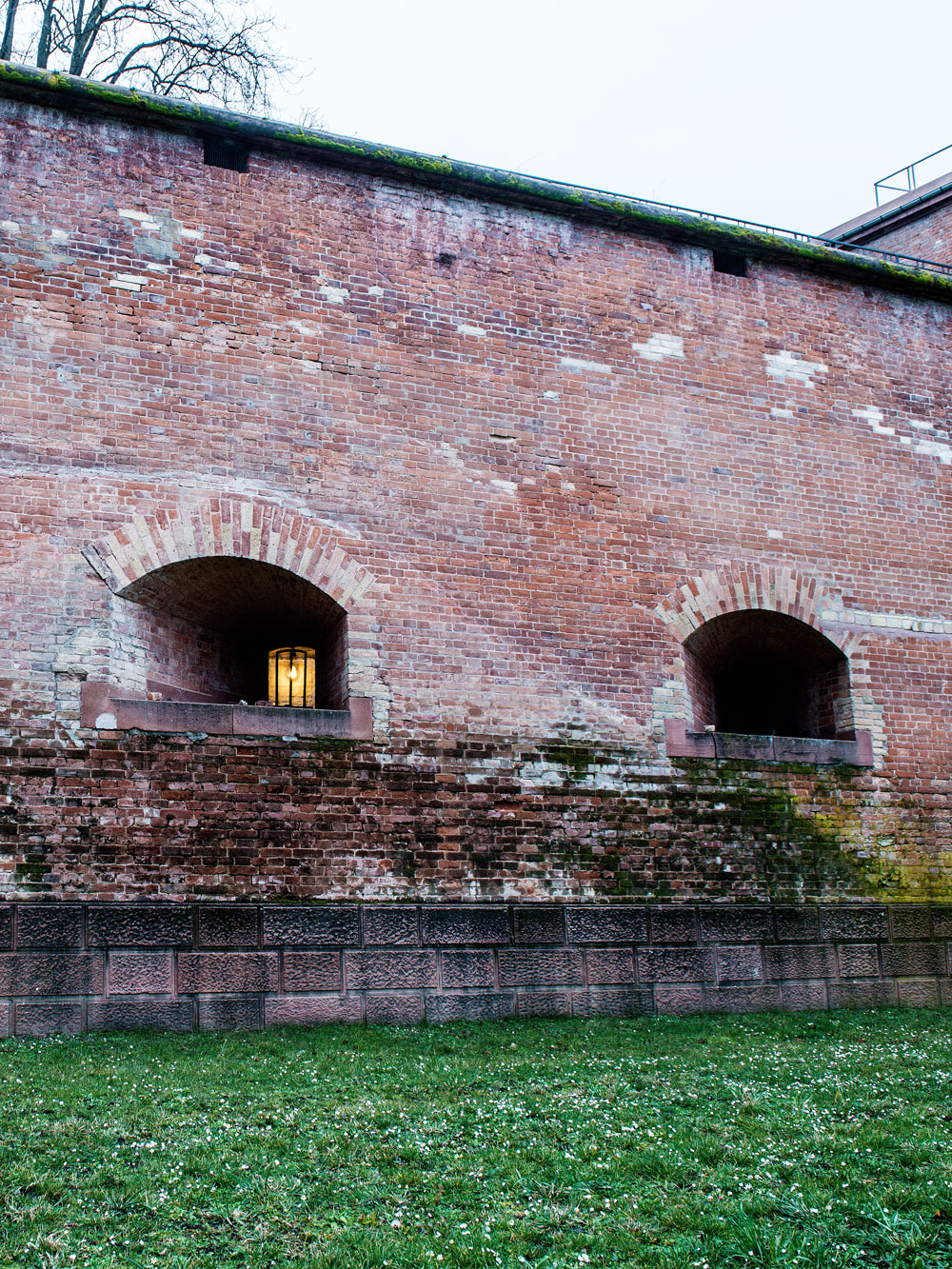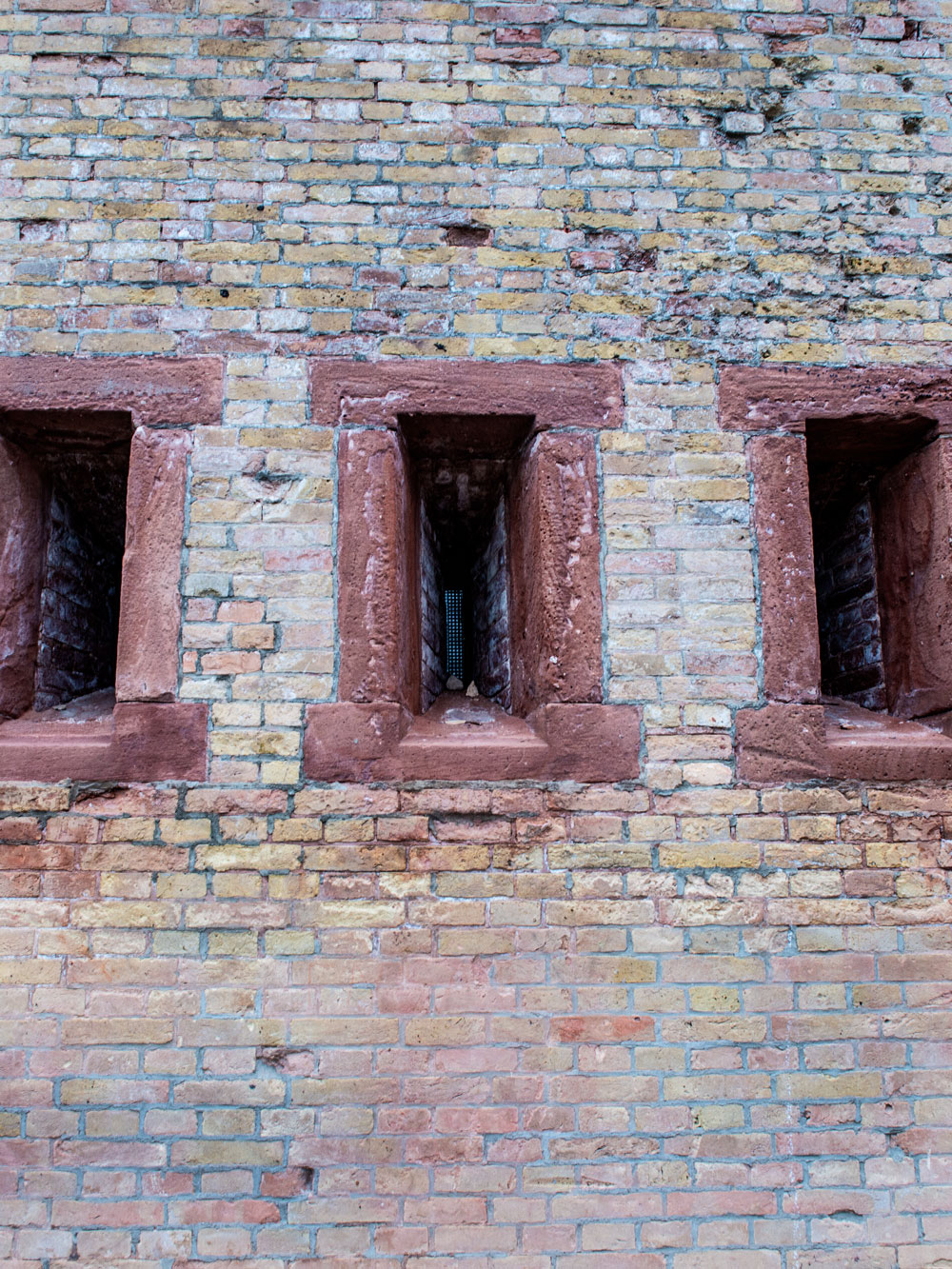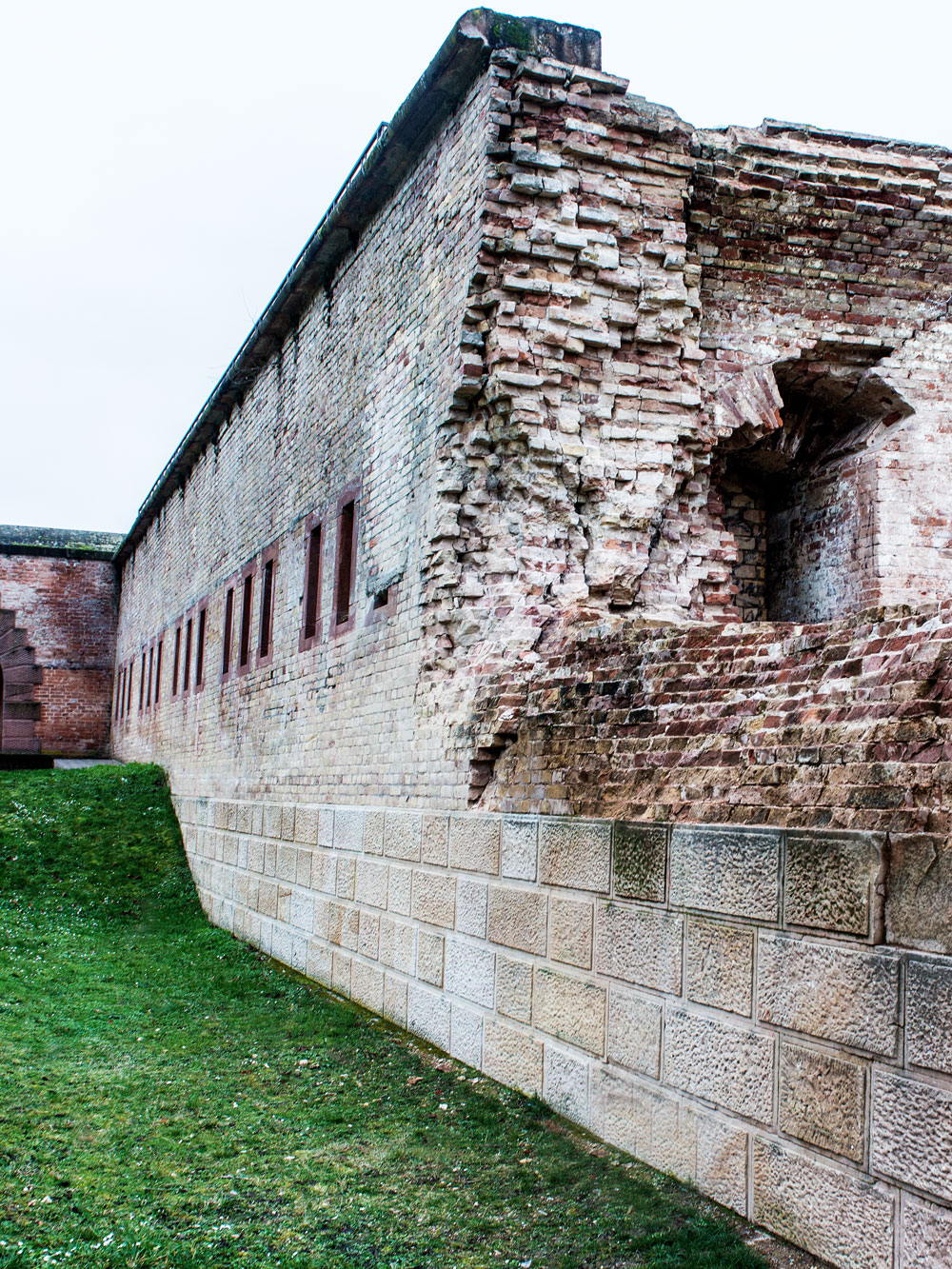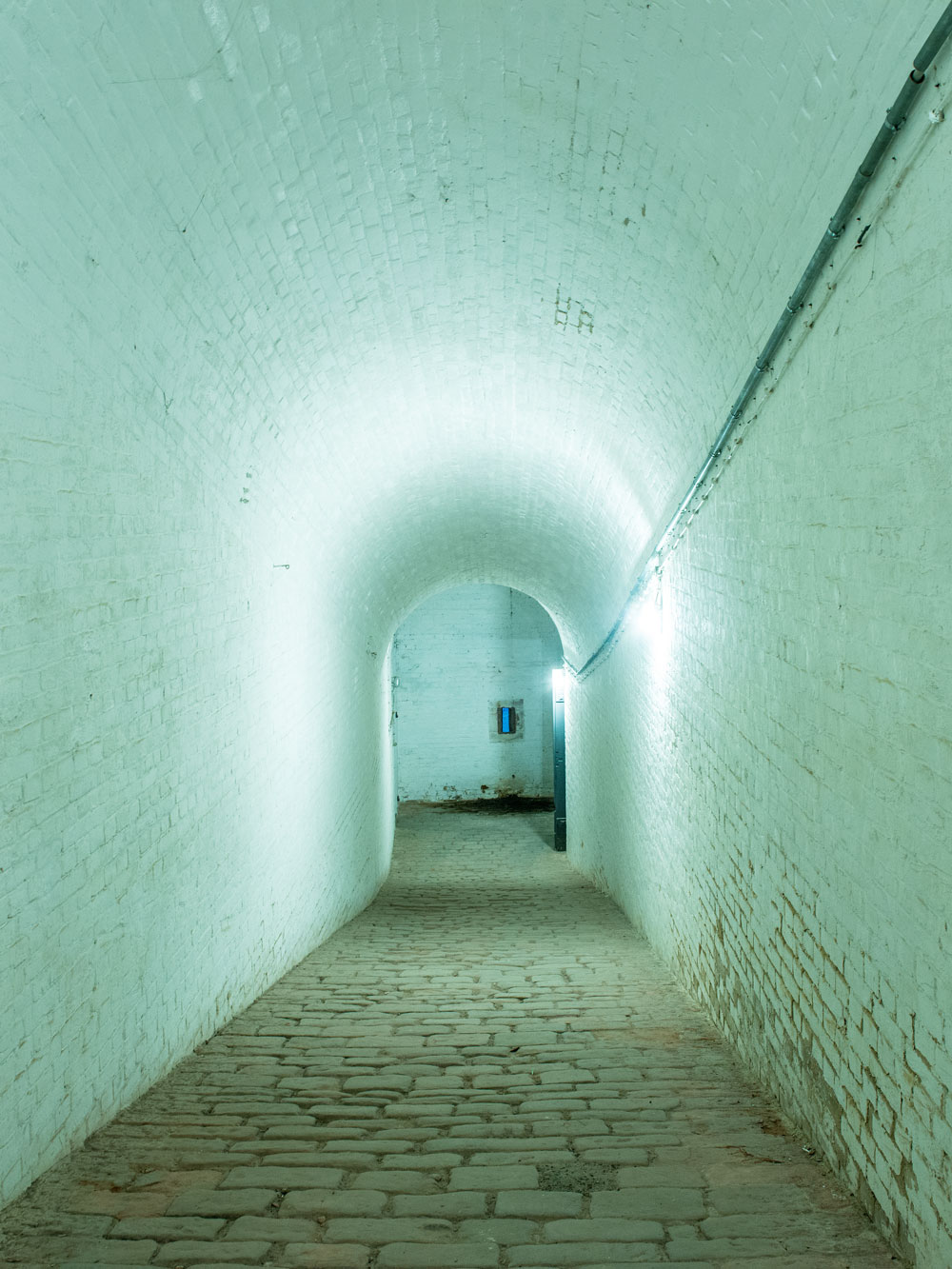In the past, Germersheim belonged to France, then to Austria and later to Bavaria. The in present times Southern Palatinate city had for centuries been fiercely fought over. In 1834, the construction of a monumental fortress was begun in order to protect the city from the French. Today, it is a magnet for tourists, and “fortress guide” Kurt Burger has already revealed its history for 24,000 visitors – a surprisingly peaceful history at that.
Steeply downwards we go, on uneven ground, over bumpy stones. It is cold and the eyes have yet to get accustomed to the dim light. No problem for Kurt Burger, since he knows them all: the old walls of the “Germersheimer Festung”, the fortress in Germersheim, and the many stories that they would tell – if they could talk.
So he has been telling the stories in their stead. For almost 20 years now. In 1936, he was born in the “Stengelkaserne”, a habitable part of the historical fortress that he now shows his visitors through: about 24,000 people up until today – “more than the city has inhabitants”.
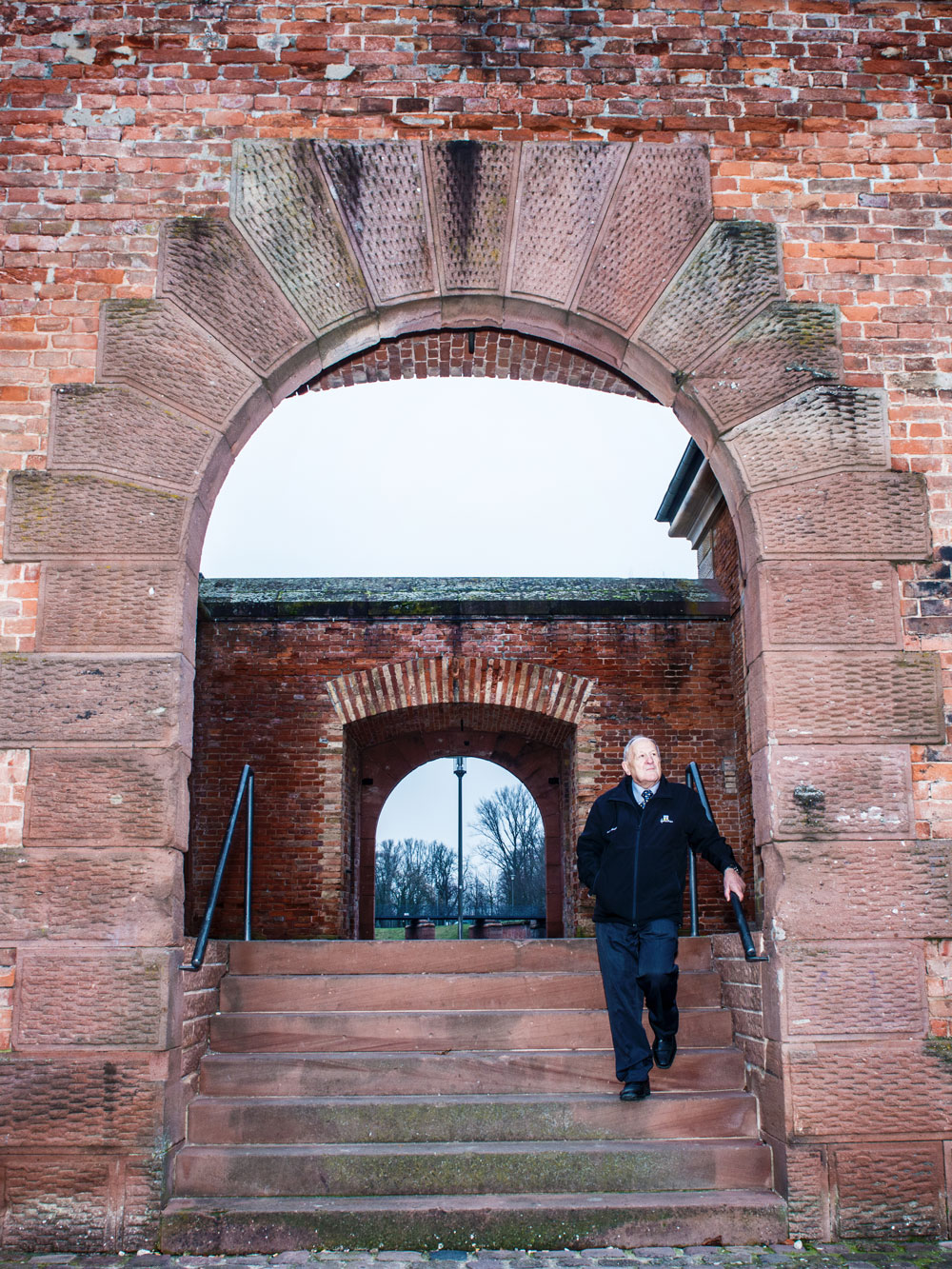
For more than 20 years tour guide Kurt Burger has been revealing the history of the “Germersheimer Festung” – where he was born more than 80 years ago.
Today, about 3,000 people fewer live in the district city on the left bank of the Rhine, 13 kilometers away from the cathedral city Speyer and roughly halfway between Ludwigshafen and Karlsruhe. It is a place with a long history beginning in 1276 when it was granted city rights by Rudolf von Habsburg.
More than 500 for the most part belligerent years later – in the year 1815 – the German Confederation decided that Germersheim should be converted into a secure stronghold as a protection measure against the French. In 1834, construction works of a monumental, polygonal building began and were to last for another 27 years. The two stately portals to the city are still standing today. One of them, the “Weißenburger Tor” at the east of the site – the restoration of which was funded by the EU –, has in recent times become the city’s landmark and houses the visitor centre. The casemate, into which Kurt Burger leads his visitors over a steep entrance-way, is quite impressive, too: a subterranean vault with white walls made of “so-called king’s stones which were fired in Germersheim,” as Burger tells us. He points to the embrasures for the gun or cannon barrels and the holes at the ceiling where the gunsmoke could escape. “It is produced when gunpowder is ignited,” the former chemical laboratory technician explains. The infantry passageway used to be 1.8 kilometers long – “for troop movements behind thick walls”.

